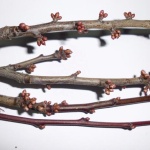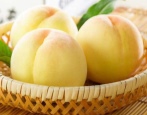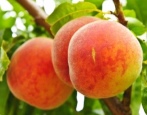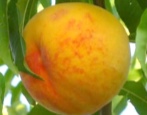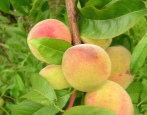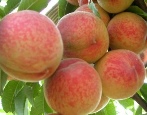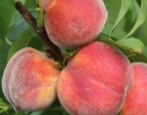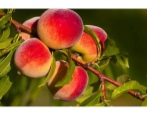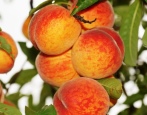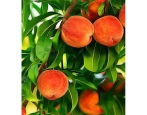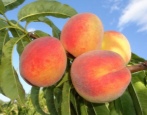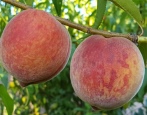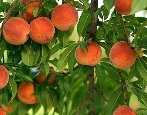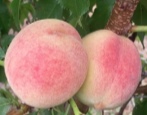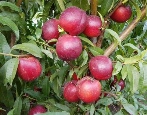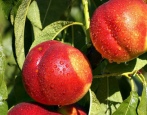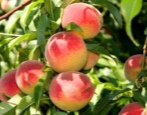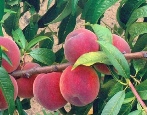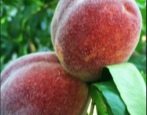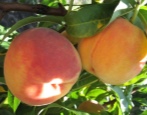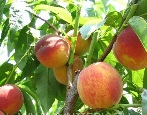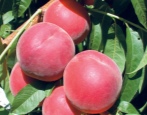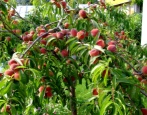
- Authors: America
- Appeared when crossing: Elberta x Greensboro
- Year of approval: 1947
- Growth type: vigorous
- Ripening period: average
- Self-fertility: self-fertile
- Appointment: dining room
- Yield: high
- Transportability: good
- Early maturity: for 3-4 years
Along with new peach varieties that are emerging in huge numbers, many summer residents and farmers prefer to grow classic varieties with a long history. These types include the Golden Jubilee of American selection.
Breeding history
The Golden Jubilee is a peach with a long history, the result of the painstaking work of American scientists 100 years ago (1921). The parental forms of the varieties that were used in the crossing process are Greensboro and Elberta. The main goal of the breeders was to create a hardy variety that gives an environmentally friendly harvest. This peach was entered in the State Register in 1947. The fruit crop is zoned in the North Caucasian region, as well as in the territory of the Crimea.
Description of the variety
The Golden Jubilee is a vigorous crop, characterized by a rounded crown shape, strong spreading of branches, weak foliage with leaves of a deep green color, as well as a developed root system. As a rule, the culture grows up to 4-5 meters in height. The tree grows fast enough.
Plum blossom begins in mid-May and lasts 10-14 days. At this time, the crown is abundantly covered with flowers-bells of deep pink color, emitting a pleasant aroma.
Fruit characteristics
The American variety belongs to the group of large-fruited species. The average weight of a peach is 120-140 grams, but sometimes the weight reaches 200. The shape of the fruit is broadly oval and slightly flattened on the sides. Ripe peaches have a golden yellow color, which is diluted with a dark carmine blush, which occupies more than 50% of the fruit surface. The peel of the fruit is of moderate firmness, not hard. The abdominal suture on the surface of the fetus is noticeable.
Peaches have a universal purpose: they are eaten fresh, processed, canned, and used in cooking. Once harvested, the fruit is easy to transport and can be stored for up to 6-8 days.
Taste qualities
Peach is characterized by excellent taste. The bright orange pulp, turning pink at the stone, has a slightly fibrous and very juicy structure. The fruit has a harmonious taste: bright sweetness without sugary and astringency goes well with pleasant sourness. Peaches have a pleasant, dessert aroma. Medium-sized, furrowed bone is easily separated from the pulp.
Ripening and fruiting
This species is fast-growing. The tree begins to harvest 3-4 years after planting the seedling. Fruits ripen together, while the fruiting period is extended for 3-4 weeks. The active phase of fruit ripening occurs in the first ten days of August. Ripe peaches should be removed from the tree immediately, otherwise after 2-3 days the fruits may crumble. Peach bears fruit for 12-15 years.
Yield
The peach variety Golden Jubilee is quite fruitful. Interestingly, the numbers only increase over time. On an industrial scale, the average is 200 centners per hectare. A tree at the age of 10 years gives up to 50 kg, and the maximum you can count on is 65 kg.
Self-fertility and the need for pollinators
The Golden Jubilee peach tree is self-fertile, so it does not need obligatory pollinators. According to experienced summer residents, planting several donor trees on the site can increase the yield by 30-40%. Pollinating trees should have the same flowering period as the Golden Jubilee peach. The most productive are the following species: Stavropol pink, Inka, Kharnas and Volcano.
Growing and care
Peach seedlings are planted both in autumn (in the southern part of the country) and in spring (in the middle lane). The most important thing is to plant when the tree is in a state of complete rest. The place for landing should be chosen windless, sunny, level, protected from drafts. As a rule, this is the southern or southwestern part of the garden. It is necessary to plant plants at a distance of 3-4 meters so that in the future the crowns of trees do not shade each other. An annual seedling with a well-formed root system is chosen.
Classic tree care, consisting of watering, fertilizing, loosening the soil, forming a crown, removing dry branches, mulching the soil, preventing diseases, preparing for winter.
Watering is carried out several times per season. Fertilizers are applied in the second year after planting. The tree loves phosphorus-potash mixtures. Pruning of branches is done three times per season.
Preparation for winter includes stripping old bark, treating wounds and cracks with garden pitch, whitewashing with lime, to which copper sulfate is added, as well as deep mulching (a layer of straw at least 15 cm) and winding the trunk with agrofibre (for northern regions).
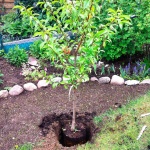
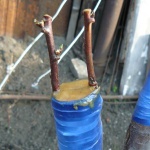
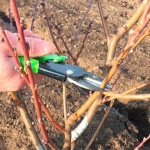
Frost resistance and the need for shelter
The tree is endowed with high frost resistance, therefore, it easily survives temperature drops to -20-25 degrees. It is worth noting that flower buds and shoots are also winter-hardy, that is, they do not lend themselves to freezing. A culture needs shelter only if it grows in the middle zone of the country and in the north. When growing a peach tree in the south, there is no need for shelter.
Disease and pest resistance
Peach Golden Jubilee has high immunity, therefore it is not subject to diseases such as clotterosporia and powdery mildew. The only ailment that sometimes a tree suffers from is the curliness of the leaves. As a preventive measure, spring treatment with Bordeaux liquid is suitable.
Among the pests attracted by the peach tree, the most active are aphids, moths, weevils and whiteflies. Spraying with insecticides will help get rid of pests.
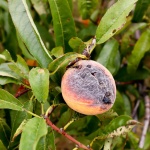
Requirements for soil and climatic conditions
Peach grows comfortably in an area with loamy or sandy loamy soils. The soil should be fluffy, fertile, easy to pass air and moisture. In addition, the acidity level should be neutral or subdued. Too shallow groundwater should not be allowed.
